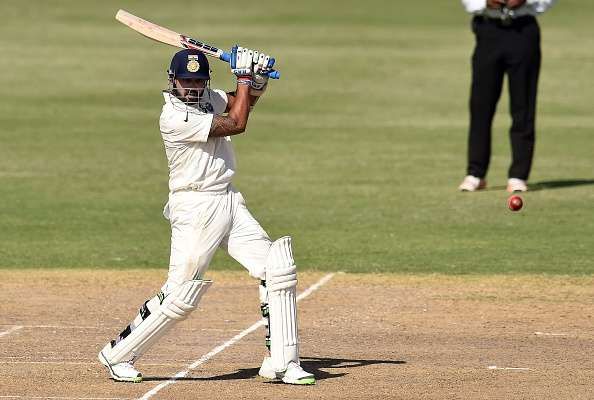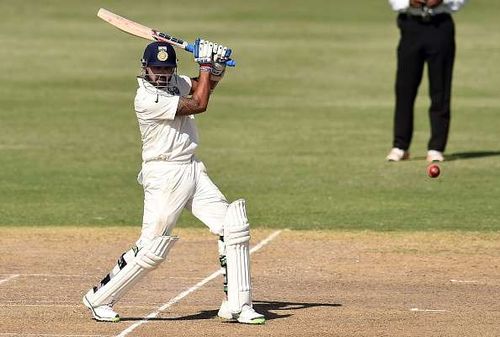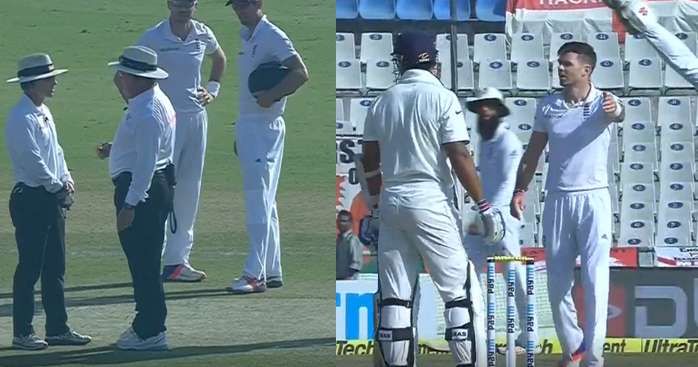
Why Murali Vijay was given not out obstructing the field
There are many ways to get out in the game of cricket but one of the most bizarre is to be given out obstructing the field. And day two of the third Test between India and England, Murali Vijay survived a scare as there was an appeal for just that off the bowling of James Anderson.
It all happened in the final ball of the third over of the innings as James Anderson’s length ball outside off stump was defended back to him. After first feigning to throw the ball, the fast bowler then actually threw it in the direction of the stumps and it hit Vijay instead, who was just outside his crease.
And no sooner had the ball hit Vijay that Anderson was appealing for obstructing the field, when Vijay didn’t wilfully move or obstruct the throw from hitting the stumps in any way. The umpires had a chat with each other and decided not to go upstairs and just asked the visitors to carry on.
Here is the law of the game (Law 37) pertaining to obstructing the field and why the umpire gave the Indian opener Not Out.
1. Out Obstructing the field
Either batsman is out Obstructing the field if he wilfully attempts to obstruct or distract the fielding side by word or action. In particular, but not solely, it shall be regarded as obstruction and either batsman will be out Obstructing the field if while the ball is in play and after the striker has completed the act of playing the ball, as defined in Law 33.1, he wilfully strikes the ball with
(i) a hand not holding the bat, unless this is in order to avoid injury. See also Law 33.2 (Not out Handled the ball).
(ii) any other part of his person or with his bat. See also Law 34 (Hit the ball twice).
2. Accidental obstruction
It is for either umpire to decide whether any obstruction or distraction is wilful or not. He shall consult the other umpire if he has any doubt.
In this case, the umpires on the field decided that despite the fact that the ball hit Vijay, who was out of his ground, on the way to the stumps, he was not out according to clause 37.2 as they considered it an accidental obstruction.
After defending the ball back to the bowler, Vijay just stood there without moving his feet or body, even though he was out of his crease. Had the Indian opener made any movement or effort to get back to the crease, that would have been considered as wilfull obstruction.
But since there was no movement from the batsman or any effort to get back or stop the ball from hitting the stumps, the umpires rightly ruled it as an accidental obstruction and ensured that Vijay’s vigil at the crease continued, despite the appeal from the bowler.
Watch: Ben Stokes and Virat Kohli involved in a fiery verbal spat in Mohali
While he couldn’t have been given out obstructing the field, he still could have been run-out had the ball ricocheted off his pads and onto his stumps. So Vijay will need to be more careful about where he is in accordance to the crease, so as to not be run-out in the future.

